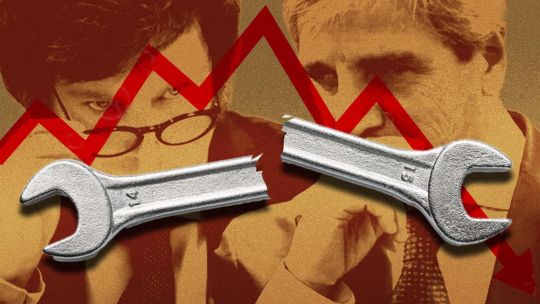
Risks don’t disappear just because you ignore them. They only become more dangerous.
– Nassim Nicholas Taleb
At its core, economic policy is the art of managing risk. No programme is immune to tension, and every stabilisation plan involves a series of decisions that prioritise certain objectives at the expense of others. Each government chooses which risks it will confront directly, which it will accept passively, and which it will ignore in the hope they do not materialise. For President Javier Milei’s government, the choice has been clear: the main risk to be tackled was inflation – and the entire economic strategy has been structured around that goal.
This approach has delivered striking results. In under a year, inflation has fallen from monthly double-digit rates to below a monthly three percent, without relying on traditional anchors such as price freezes (although it did employ exchange rate controls). Fiscal and monetary management has been strict, with a sustained primary surplus, real spending cuts, and a Central Bank that has sharply reduced its market interventions.
However, macroeconomic order and falling inflation are not in themselves enough to ensure long-term sustainability. They are necessary, but not sufficient. It is in the unattended areas of the programme that the most serious risks are now accumulating. If these are not monitored and addressed, they could undermine the achievements made so far.
1) Exchange rate misalignment. The use of the exchange rate as a nominal anchor has led to a significant real appreciation, which has not been resolved within the current banded float and partial capital control regime introduced in April. This real appreciation has several damaging effects: it erodes the profitability of export sectors; encourages outbound tourism while reducing the competitiveness of inbound tourism; jeopardises the external surplus (with a large current account deficit now in place); and hinders reserve accumulation at the Central Bank. It also raises doubts about Argentina’s ability to service its foreign-currency debt and keep its country risk rating at levels that block access to sovereign debt markets on favourable terms. Meanwhile, it fuels expectations of a future nominal correction, stoking inflationary inertia and prompting an increase in dollar hoarding. In this context, the dollar has risen more than 5 percent so far in July. At the same time, trading volumes, prices, and Central Bank activity in the futures market have all increased. Although some of this volatility can be attributed to the electoral calendar, the signals are concerning, especially given low reserve levels and the government’s reliance on external borrowing to replenish them.
2) Fiscal risks. While the government has managed to sustain a primary surplus, the disinflationary context changes the dynamic. As inflation eases, the ‘melting’ effect on spending weakens, meaning greater precision is needed in managing expenditure. Over the first five months of the year, only economic subsidies registered a significant real-terms reduction. Meanwhile, pressures are building to boost incomes for pensioners, public employees and provincial governments. Whether fiscal discipline can be maintained will depend on how precisely President Milei’s “chainsaw” is applied in the second half of the year.
3) Monetary risks. Though still under control, there are warning signs that should not be overlooked. The monetary base and broad aggregates are growing, partly due to increased transactional demand, but also because the Treasury has begun using some of the funds deposited at the Central Bank, following an accounting transfer of profits in April. While this may be temporary and market-driven (not all Treasury debt maturities were rolled over in the last auction), it still represents a loosening that could weaken the monetary anchor if not handled carefully.
4) Political risks. The President’s confrontational strategy, which helped consolidate his support base early on, appears to be reaching its limits. Congress has begun to push back, advancing bills that threaten the fiscal viability of the programme. The opposition – and even some occasional allies – seem to have regained the initiative in the Legislature, and the government has lost part of its grip on the legislative agenda. This casts doubt on the passage of key reforms and raises the risk of legislation with major fiscal or symbolic costs.
5) Social risks. The recovery in real wages seen earlier in the year has been reversed. Increases in tariffs and basic services (electricity, gas, transport, private healthcare, among others) have outpaced average inflation, squeezing disposable incomes across much of the population. While the streamlining of social programmes and the real-terms rise in the Asignación Universal por Hijo (universal child allowance, AUH) benefit payments have provided a cushion, they cannot indefinitely replace general wage improvements. Political and social risks also feed into one another: if parliamentary tensions persist and social unrest grows, the room to push through structural reforms will shrink.
An unavoidable question is whether the risks identified in this article could trigger a disruptive correction – in the exchange rate, inflation, or financial system – or whether a slower, more drawn-out scenario is more likely: a process of cumulative wear and tear that forces a partial reconfiguration of the programme without a single shock event.
Argentina’s economic history provides examples of both. In periods of high currency appreciation, like the present, the most immediate risk typically lies in the sustainability of the external front: if the exchange rate is not adjusted and reserves are not rebuilt, a sudden dollar spike could act as a trigger for wider destabilisation – especially if it coincides with political unrest or social turbulence.
Yet there is also a more plausible – and perhaps more insidious – path in which no single risk spirals out of control, but all gradually worsen. Weak investment, stagnant wages, social fatigue, loss of political control over Congress, failure to build reserves and rising dollar demand: none of these may seem urgent on their own, but taken together they undermine the sustainability of the government’s programme. What begins as a virtue (fiscal discipline, falling inflation) risks becoming a liability if not accompanied by reforms and adjustments that address the underlying imbalances.





